Lisa Niver's Blog: We Said Go Travel, page 362
September 30, 2014
Ilocos Norte, Philippines: Paoay Opens Bacsil Sand Dunes
Sure, the sand dunes of Ilocos Norte have been used as the setting for the desert scenes in the movies Mad Maxx, Born on the Fourth of July, and the local blockbuster flicks ‘Ang Panday’ series and ‘Temptation Island’. The sand dunes have always been there. For the longest time, the locals knew it was unique and beautiful to some degree, but no one really knew what can be done in and out of a barren, useless landform – it is, after all, inhabitable and definitely not arable.
In previous years, however, given the development of tourism in the province of Ilocos Norte in Northern Luzon, several groups have started re-branding and re-positioning the sand dunes as a one of a kind “extreme adventure” destination in the Philippines. This completely makes a 360-degree turn from its earlier image as ‘dead and dull’.
Recently, an outdoor group discovered an area in the village of Bacsil in Paoay that is a good addition to the options present for sand dunes safaris. How does this area differ, then, from earlier established commercial areas in the sand dunes complex? Firstly, it is a newly discovered and developed area so the terrains are as pristine as they can get (and not many tourists have been there yet!). Secondly, The combination of wide sandy plains, clusters of closely-formed dunes, several oases and outlying vegetation, a good vista of the coast towards the West Philippine Sea, and the height of its dunes (some at 70 metres in height!) does not disappoint anyone visiting Bacsil.
Bacsil does not only offer the usual desert expeditions using rugged and sturdy four-wheel drive jeeps with their complementary sand boarding. But, in addition, it also offers picnicking and camping in a desert setting, golf playing and several other outdoor activities.
Furthermore, inspections are also being made to survey the waters adjacent to the sand dunes as initial dives have revealed a promising coral reef in the area. What does this mean? SCUBA diving is in the pipelines of additional activities that can be done here, too! The reef has come to be called as the ‘Onse Reef’ amongst the locals. I will definitely be giving updates on this potential dive site the moment I get to see it myself – hopefully very soon!
Across the Southeast Asian region, it is only in Ilocos Norte where one can find a desert environment. Technically, this landscape is known as the ‘Ilocos Norte Sand Dunes’ that spans across four towns in the province. Due to its superlative natural beauty, geological uniqueness, and scientific relevance, it has been declared as a National Geological Monument (NGM) in the Philippines in 1993 (the only three other sites that have been declared as NGM in the country are: the Hundred Islands National Park off-coast Pangasinan, the Taal Lake and Volcano Protected Landscape in Batangas, and the Chocolate Hills in the island of Bohol). It is widely accepted that Paoay boasts the best terrains there are to find in the sand dunes complex, and that Bacsil is definitely worth checking out if you are up north!
The post Ilocos Norte, Philippines: Paoay Opens Bacsil Sand Dunes appeared first on We Said Go Travel.
Should you be a Good Chinese Wife?
Please enjoy this excerpt from
Good Chinese Wife: A Love Affair with China Gone Wrong
by Susan Blumberg-Kason
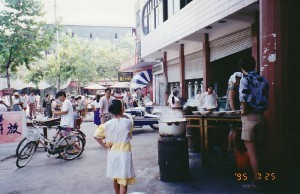 The Chinese University of Hong Kong sits atop a mountain, north of Hong Kong Island and twenty minutes south of the mainland China border. When I arrived on campus in 1990 for a college exchange year, I had imagined Hong Kong would be a city of skyscrapers and neon. But the only lights around the campus came from the occasional barge or leisure boat in otherwise quiet Tolo Harbour. On the weekends, the campus was almost deserted. Local students returned home to their families, and the few overseas students studying abroad left for the bustling expat areas of Kowloon and Hong Kong Island.
The Chinese University of Hong Kong sits atop a mountain, north of Hong Kong Island and twenty minutes south of the mainland China border. When I arrived on campus in 1990 for a college exchange year, I had imagined Hong Kong would be a city of skyscrapers and neon. But the only lights around the campus came from the occasional barge or leisure boat in otherwise quiet Tolo Harbour. On the weekends, the campus was almost deserted. Local students returned home to their families, and the few overseas students studying abroad left for the bustling expat areas of Kowloon and Hong Kong Island.
Upon my return for graduate school years later, new residential skyscrapers had popped up across the harbor. The campus was beginning to look like what I’d first imagined. But the most significant change on campus was that the mainland Chinese population had blossomed from a handful of people to about two hundred graduate students. I was fascinated by these newcomers and their alluringly mysterious culture, so utterly different from my own.
On one of those still-quiet Saturday nights, a month after I started graduate school, I locked myself out of my dorm room. I was on my way to call a friend, using the hall phone around the corner, and as soon as I closed my door, I knew I had left my key on my desk. My roommate, Na Wei, hailed from Harbin in northeast China, but she slept in her boyfriend’s single room most nights and only returned to our room during the day when she needed a change of clothes or a short nap. So no luck there.
Then it hit me. The guard downstairs kept spare keys. I could borrow one from him.
My stomach fell when the elevator opened on the ground floor. The lobby was empty. I inched over to the guard’s desk to read a tattered white sign perched upon it. Although I couldn’t speak the local Cantonese dialect, I had studied Mandarin, the official language in mainland China. With five years of Mandarin behind me, I could almost make out the meaning of the Chinese characters on the sign: if, need, something, and return. But one character came up as a blank. If you need something, I will return blank.
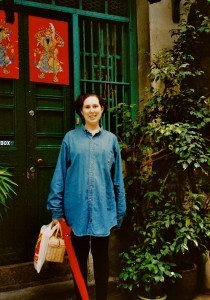
Susan pregnant in Hong Kong (photo by Annie Galpin)
If only I could read the one character describing when the guard would return. I usually got around Hong Kong without having to resort to my little, red Chinese-English dictionary. Now, the one time I needed it, it was locked away in my room, not far from my coveted key.
I decided to take a seat on a vinyl bench near the front door in case someone came by who could translate that mysterious character. Worst case, I would have to stay up all night until the daytime guard arrived.
And that would indeed be the worst case for me. Other than on long international flights, I had never pulled an all-nighter. I was the type of college student who worked ahead to avoid cramming all night before exams or writing a paper the night before its deadline. Thinking about the daunting prospect of a lobby all-nighter, I looked up, startled, as two men and a woman suddenly entered the building.
Cai immediately caught my attention. Like a movie star, he stood six feet tall with confident eyes and an infectious smile. His hair was cut in the popular Hong Kong men’s wedge of the early 1990s—longish on top, tapering down to almost a crew cut a few inches above the neck. He carried himself with the self-assurance of someone used to drawing admiring glances. He looked striking in his stylish brown corduroy pants, short-sleeved shirt, and hunting vest, but I couldn’t place his nationality. Based on his more sophisticated appearance, I figured he was from Taiwan, or maybe an overseas Chinese from Japan or another developed country.
His friends, however, weren’t so hard to identify. The shorter man wore an olive business suit with the white label still stitched to the cuff, and the woman was dressed in a long, striped polyester skirt and a mismatched floral blouse. Definitely mainland Chinese.
On my first trip to China in 1988 with a group from high school, I had noticed this eclectic fashion trend. Up until the late 1970s, fashion in China consisted of simple “peasant pajamas” or “Mao suits.” In the years after the Chairman’s death, people started to experiment with colors and patterns, including bright stripes and flowers. So this distinct mainlander fashion was easy to recognize in stylish Hong Kong.
Once Cai’s friends turned toward the elevator, I knew I had to act quickly before he left the lobby and I had to face my all-nighter again. “Excuse me, can you read this sign?” I hurried after Cai, speaking in English. No answer. Oh God, what if he only knows Cantonese? I thought. But I was determined not to sit on that bench all night, so I repeated my question in Mandarin as I felt a pearl of sweat trickle down my neck.
Cai glanced at the sign and said nonchalantly in Mandarin, “Tā jiù mashàng huílái.” He will be back soon. His Mandarin was clear and articulate, without the slurring of the northern Chinese accents.
“Oh, thank goodness! I locked myself out and need a key,” I explained to this attractive, well-spoken stranger, stumbling in choppy Mandarin. The relief I felt, knowing that I wouldn’t have to camp out in the dorm lobby all night, seemed insignificant compared with my sudden desire to know everything about him. I needed to find a way to prolong our conversation.
“Méi wèntí.” Don’t worry. He nodded slightly, as if locking oneself out happened all the time. “Actually, I need to buy a phone card from the guard.” He went to sit on the bench I had just occupied. I couldn’t believe my luck.
We hope you enjoyed this excerpt from
Good Chinese Wife: A Love Affair with China Gone Wrong
by Susan Blumberg-Kason
The post Should you be a Good Chinese Wife? appeared first on We Said Go Travel.
September 29, 2014
A Journey to Rediscovery in India
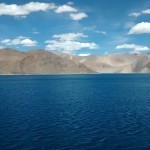
Rediscovery of Self in the Land of the High Passes
I was sitting right in the middle of my sisters when my eyes fell on the handsome mountains covered with a blanket of snow on their tops. I began to jump and almost sat over my sister (who was next to the window) to capture the fascinating scene with my camera. The heavenly scenes were ever changing as the plane moved closer to Leh (headquarters of Ladakh district). The green and lively mountains gave way to the barren and dusty landscape of Ladakh. There was also a green patch amidst the dry rocks that resembled an oasis in a vast sultry desert. The landscape was interspersed by pristine blue and turquoise lakes apparently formed from the melting of glaciers nearby. When our plane was about to touch down, I could see another oasis just below me which would be our home for the whole week.
After reaching Leh, rejuvenated as we were after witnessing such splendid yet inexplicable beauty of the place, we decided to roam around a bit before heading to our resort. It was nightfall by the time we reached our new home and crashed into the beds as soon as we entered our cottage.
We got up early in the morning and had a light breakfast before hitting the roads leading to Pangong Tso Lake via Chang La Pass. The road was very bumpy and it actually felt like climbing a 5000 metre high mountain peak. Chang La at 5360 metres is no less daunting in comparison to Khardung La(credited to be the world’s highest pass). We had some piping hot black tea at the Chang La Cafeteria to soothe our aching heads and comfort our cold bodies. Once we felt refreshed, we were ready to undertake the enduring ride to the lake. The route was long and arduous but we felt little because of the out of this world views from our windows. When we entered the Changthang wildlife region, we were all very excited in anticipation of beholding some exotic Ladakhi wildlife. We did spot some cute little Ladakhi Marmots who were fortunately out of their burrows, a few hundred metres away from the main road. Marmots are playful creatures with their face resembling a Beaver and body similar to a squirrel. In fact, they are large brown squirrels living in a cold desert. On the way to the lake, there were many meadows, flower valleys, mountain passes, rapid rivers and some spectacular views complete with teeming wildlife including Horses, Yaks and Marmots. The lake is on the mind of almost every visitor to Ladakh because of its ethereal beauty and the different shades of blue that are clearly visible in its crystal clear waters. We were surprised to see so many vehicles as well as a large number of eateries for tourists. Many of the restaurants sported names like Rancho’s Cafe and 3 Idiots Corner. A few metres away from the parking was 3 Idiots Point where the actual shooting of a scene of the movie titled 3 Idiots apparently took place. The lake is one of the largest salt water lakes in Asia and is more than 130 km long with around two thirds portion falling in Tibet. We could spot several migratory water birds and gulls having a good time at the lake. At 4400 metres, it is almost as pristine as Lake Mansarover in Tibet. The massive expanse of the pure azure waters is beyond belief so much so that the lake could easily pass for a gigantic sea trapped between mountains. In obeisance to the great lake, we all touched its cold water and greeted it in our own way. I could feel the heaviness in the pure water obviously due to its high salt content but I truly felt blessed and happy when the lake responded with a cold touch. The experience of walking along the lake with cold breeze caressing my hair was very fulfilling and rewarding. Once we had taken in all that we could, we had some freshly made Momos( stuffed dumplings served with tangy sauce) along with tea at one of the funnily named restaurants and then headed back to Leh.
Ladakh is a legendary land of magic and mysteries. It is holy, adventurous, barren and beautiful at the same time and has the power to heal, to change and to liberate one and all. We finally came to a realization that reaching any destination does arouse excitement and anticipation but it is in the journey that one receives all the happiness. As we left behind our heavenly home, we began to wonder how this journey to Ladakh had infused us with so much life and energy that we began to appreciate even the simplest things of nature.
Thank you for reading and commenting. Please enter the Gratitude Travel Writing competition and tell your story!
The post A Journey to Rediscovery in India appeared first on We Said Go Travel.
Ticking off the Top 7 Historic Attractions in Brussels
Brussels is Belgium’s capital and the largest city in the country. It is a cosmopolitan city with a renowned art scene that has been vibrant for several centuries. History and culture enthusiasts cannot afford to miss sampling the charms of this city especially after snagging those hard-to-come by last minute holidays from Ireland. A notable trait of this city worth a mention is that a great many of its walls are painted with comic characters such as the lovable Tintin along the city’s famed Comic Strip Trail.
Here are some travelling tips for a magical experience in the heart of the European Union:
Sample Culture at Grand Place
There is no other place in the entire city that perfectly spells the word culture than the Grand Place. The guild houses there have superb Gothic architectural designs. The Golden Tree is an outstanding site that was once a brewery. Check out The Bag, which was a residence for cabinet makers, before leaving the premise.
Travel Through Time at City Museum
The City Museum in Brussels has a neo-Gothic feel. It consists of the King’s House, which condenses several centuries into a few minutes of walking through. Here, you’ll get to view a rare collection of paintings, gold ornaments and wall-hangings. Fashion lovers are in for a treat because the 3rd floor is entirely dedicated to more than 800 cultural outfits.
Unravel History at Mannekin Pis
This is a statue of a very small boy (approx 61cm tall), but it has managed to reserve a special spot in Belgium’s history. It’s essentially an amusing lucky charm. However, it has experienced its fair share of troubles. It was abducted in two separate occasions in the 18th century and then shattered to pieces in the 19th century. It was later remodeled and today, it stands tall (or is it short).
Enjoy Art at Horta Museum
This museum was actually the residence of Victor Horta, acknowledged Belgian designer, at the beginning of the 19th century. During this time period, it served as a house and a studio. The architectural romance that Horta had for the place is displayed through the twisting iron staircases, elegant furniture, curved glasses and vintage paintings.
Embrace Gothic Splendour at Town Hall
This building hides many secrets from the medieval era. If it could talk, it would definitely reveal the guildsmen who build it and, of course, the French invaders. At night, the building glows and provides a rare spectacle. The detailed stonework creates magic that adds a touch of heaven to the street-scape.
Drink to the Past at A La Mort Subite
Contrary to its name (which means sudden death in English), this bar is a one-of-a-kind establishment. Enjoy Belgian beer there while re-living the past in the glamorous ambiance. The interior decor is also simply to die for(pardon the pun). The tables are made from polished wood, the mirrors from brass and the globe lights are the icing.
Be a Native at Cefé Belga
Yes, you can be a Belgian too. Even if it’s just for a brief moment, visit the Cefé Belga for a chance to unwind with the natives. This cafe is amongst the most frequented in Brussels by locals, tourists and expats. To grasp a view of the nearby lakes, sit on the terrace. The kind of music played is also jovial, and provides a relaxing way to wind down a day spent exploring the city’s many attractions.
—————————————————————————–
Paulo Navarro a talented content writer filled with charm, a sense of humor and a passion for writing. He is covering all things entertainment, fashion, food, travel, and lifestyle.
The post Ticking off the Top 7 Historic Attractions in Brussels appeared first on We Said Go Travel.
September 28, 2014
Community Centre in Tokyo, Japan
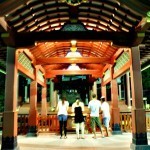
A Small Community Centre in Tokyo, Japan
Ana Prundaru
There is something magical about children playing outside; mesmerized by little things adults take for granted. Unfortunately, when I visited Tokyo for a summit, I barely saw any children chasing butterflies, or playing ball. Walking past playgrounds and museums with the scope of researching the community’s impact on educating children, I realized that, despite its powerful technical and educational advances, the Japanese capital often lacked green areas for children to roam around freely. Sure, there are a number of bigger parks, such as the Yoyogi Park, however only few children are lucky enough to live nearby. Thus, as I walked past hypermodern constructions, I wondered if the next generation of children would be playing in artificial indoor playgrounds, laced with AC and plastic plants. I felt grateful for my own upbringing that allowed me to spend countless hours outside, playing, or making little discoveries in the fresh air. It is my view that children benefit tremendously from being outdoors, because it is there that they improve motor skills and brush up their social skills, among other things.
It was however an encouraging and heartwarming experience to visit a small community center, complete with a playground, nestled between tall buildings in Eastern Tokyo. It was run by predominately retired volunteers, who aimed to give children a safe and nourishing learning environment. As they explained to us visitors, quite a few neighborhood kids spent their entire day playing, studying and crafting art projects at the centre during the holidays, while the majority came by to play during the afternoons on school days. Watching the volunteers assisting them in creating origami animals, or doing homework, I felt a huge sense of relief washing over me, because I knew these kids would not grow up isolated, in front of gadgets. Additionally, I felt the gratefulness those children had toward their caregivers, who invested so much of their time and energy toward their upbringing. Most of these kids appeared to have parents who worked full time, or their mothers worked at least on a part-time basis. Therefore, without the community centre, they would have been left home alone after school. There is no doubt to me that kids not only have an enjoyable time at the centre, but also learn crucial life lessons, such as treating each other with respect and compassion. Naturally, a small community centre will only be able to help a limited amount of children, but it is a remarkable establishment that will hopefully inspire other people to provide similar help for children. I was touched by this experience, because it showed me just how much a small group of dedicated people can achieve.
Moved by this visit, I started to put my foreign language skills to good use and volunteered as a translator for various children’s and youth causes. Frankly, my contribution is minimal, yet I felt grateful that I could offer some help in creating a better environment for future generations. My message with this essay is that, with the right mindset and a bit of help from likeminded individuals, nothing is out of reach.
Thank you for reading and commenting. Please enter the Gratitude Travel Writing competition and tell your story.
The post Community Centre in Tokyo, Japan appeared first on We Said Go Travel.
P.O.P.S. the Club with Tim Allen October 16
In January 2013, in a dingy classroom at Venice High School, Dennis Danziger, a high school English teacher, and his wife, Amy Friedman, started a new high school club. The club was just a fledgling idea, with only two elements—first, the motto would be “First We Eat,” and lunch would be served; second, this was a club for any student (and faculty members) whose life had been touched by prison.
One in 28 kids in the United States has a parent in prison. That number explodes when you add siblings, friends, aunts, uncles and friends, to the mix. Amy and Dennis knew these kids needed to know they weren’t alone. They understood that these were kids who too often kept this salient fact of their life a secret for fear of what others would say or think about them.
Friedman was already deeply involved with prison politics. Before she married Dennis in 2002, she had married a man who was in prison. She had helped to raise his daughters and knew firsthand the shaming that came with loving someone in prison. Her girls always kept their father’s whereabouts a secret, and that secret weighed on them—leading to isolation, difficulty in school, depression. As Dennis came to know and love Amy’s stepdaughters, his sensitivity to this particular secret grew, and he began to recognize how many of his own students—across all ethnicities and socio-economic levels –were affected by this same struggle. Amy and Dennis had for years talked about doing something to help these kids. And one day they decided they would start a club.
 Serving lunch was important, they decided, because nothing breaks down barriers like sharing a meal. They also knew they would help the kids learn to tell their stories—out loud and in writing. They invited guest speakers—among them Elizabeth Calvin of Human Rights Watch, Bruce Lisker, a wrongfully convicted man who served 17 years for a crime he did not commit; Scott Budnick, creator of the Anti-Recidivism Coalition; Kelley Whitis of Linda’s Voice, and many more. They also created a website featuring their students’ writings and artwork.
Serving lunch was important, they decided, because nothing breaks down barriers like sharing a meal. They also knew they would help the kids learn to tell their stories—out loud and in writing. They invited guest speakers—among them Elizabeth Calvin of Human Rights Watch, Bruce Lisker, a wrongfully convicted man who served 17 years for a crime he did not commit; Scott Budnick, creator of the Anti-Recidivism Coalition; Kelley Whitis of Linda’s Voice, and many more. They also created a website featuring their students’ writings and artwork.
Since that first meeting a little less than 2 years ago, the club has adopted a name: P.O.P.s (Pain of the Prison System), the club. They’ve expanded to more than 60 members in just that single Venice High club, and new clubs will soon be opening in schools across the country. The POPS website (www.popstheclub) has expanded, and beginning in early September, The Good Men Project began featuring, each Sunday, stories and poems by the POPS kids. POPS the club has published a (first annual) anthology of the students’ work, and stories have been featured in the San Quentin News, on Zocalo Public Square, on Madeleine Brand’s Press Play on NPR, and in November in the California Teachers’ Association Magazine.
On Thursday evening, October 16, Tim Allen is offering his talents to POPStheclub.com, Inc., a 501 c (3), as he headlines the first POPS Fundraiser at The Laugh Factory. Everyone over 18 is welcome.
The post P.O.P.S. the Club with Tim Allen October 16 appeared first on We Said Go Travel.
September 27, 2014
I live. I love. I am. Netherlands

My 23rd year in this body was rather intense. They say that the universe doesn’t always gives you what you want, but what you need. And that you will never be given something that you can’t handle. Well, all I can say is that the universe has tested me many times this past year.
I have looked death deeply in the eyes and shook hands with life. Major up and downs. Times of letting go and starting new things. I have lived and studied in a Buddhist Temple, became a certified Yoga teacher while travelling in Brazil and rode through Europe on a motorcycle so I could teach yoga and reach out to many people in different countries. Some of my closest friends consider my last year too intense, and they might be right about that, however, I don’t regret anything. And I am grateful for knowing that, no matter what happens to my body, it’s my heart that they can’t touch. Unless I want it to be touched.
I’ve seen storms in the Philippines, sunrises in Brazil and sunsets in Italy. Vanilla skies in Romania and a falling star in Germany. I swam in oceans as blue as my fathers eyes and some more green like mine. I have walked barefoot through rivers in Taiwan and rolled naked through the cold grass in Estonia. I have kissed at new moon and made love under a full. I have prayed in temples and danced on tables. I have met more people than I can and want to remember. I faced the chaos in Ukraine and joined the peaceful folklore dances in Latvia. Every time I fell down, I stood up stronger. I ate the best sushi ever in LA and fresh herring at home. Re-united with old friends and made new ones along the road. I cried when I was sad, in pain or happy, and sometimes all at the same time. I reached more than a million people with a funny yoga video that went viral, where I hoped to reach that much for things that I find important. I have travelled alone and together and at both times, sometimes wishing for the other. I have lived like a queen and as a savage. I kissed my mother hello and goodbye within the same week, for I never stayed home too long. I flew with the birds, climbed with the monkies, ran with the horses, fought with the wolves and swam with the fish. I have seen dead bodies on the road, a man dying of a heart attack in front of my eyes and people whose life where hanging on a thin tread. Watched double rainbows after the rain while chasing the sun. I was blessed to connect and touch many hearts and experience the most pure form of love. Never before I have felt so strong that all and everything in this universe is one. Loved, lost and loved again.
I gained scars, knowledge, sunburns, friends, muscles, better understanding and love.
I lost weight, attachment, blood, ego and distracting thoughts.
I can fill up books about the things I have seen, smelled, tasted, heard, felt and done.
Everything I have written is true and has shaped me into the human being that I am today.
I live. I love. I am.
Thank you for reading and commenting. Please enter the Gratitude Travel Writing competition and tell your story.
The post I live. I love. I am. Netherlands appeared first on We Said Go Travel.
September 26, 2014
Saturdays in Manila, Philippines
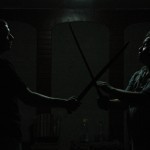
I lean to open sliding doors and step onto the red-tiled lanai. It’s 6 a.m. A canopy of bamboo, trees, and pastel awnings portrays rural privacy. The mango Abby and I planted two years ago curtseys in a breeze, begging applause for her growth. I wonder if she’ll ever bear fruit.
Most days, I walk to work. Hibiscus and 12-foot poinsettias guide me through a barangay cut of a jungle swamp and manicured into a neighborhood. A step past the gate and Manila wraps me in pouring car horns and the feline purrrrrr of jack hammers, starting a day filled with unearned deference: choruses of “Ma’am/Sir”, elders calling me “Boss”, and 90-pound women trying to carry my 40-pound boxes.
But today is Saturday, home day, real day; so I sip another cup of chicory coffee and consider the morning before our friends arrive. Saturdays heal. No special treatment, good or bad, just people being people, together. Our citrus tree says I should go to market for fresh tilapia: the kalamansi are ready. If the sili peppers are shining red, we’ll mix the two in soy sauce for sawsawan to dip our fish.
We didn’t always have Saturdays here, though, not the healing kind. Some warned us Manila was impermeable – our outsider status permanent and preordained. So, five days a week I only worked and Abby labored for a perfect loaf of bread. On Saturdays, we walked spirals in four-story malls, holding hands, tightly, turning like screws. We lived that way for months.
After work everyday, I passed a dojo where jabs snapped and shins slammed into duct-taped heavy bags. It was the laughter, though, that drew me in. Kru Carlo was the instructor. He laughed the loudest. So, we joined him to study arnis, the local bladed martial art. Soon Kru said it was time to meet Manong, a master of the Kalis Ilustrisimo arnis system. We were swimming laps in a cultural fish bowl, staring out at the ocean; this was just what we needed. So, with Abby closing in on that perfect loaf, we hosted a dinner.
At the gate, Kru smiled and Manong greeted us with a strong handshake and easy eye contact— rare as rocking horse teeth Monday to Friday. Through dinner I saw why he was called ‘the old master,’ even having never seen a kalis in his thick hands. His story and world vision intrigued us and his manner seduced us. For hours we tuned into him like the first TV in the county.
“May I ask you to remove your shirt and stand at the wall,” he asked. If the conversation had built to this, I hadn’t seen it. But, I did it. Manong slipped a knife from his pocket.
“Stay still and follow the tip with your eyes.”
He leveled the blade, pushed it toward my right eye and retracted it. And, again. Once my adrenaline slowed. Acute intrusions of heat burned hot as the tip neared me and lessened with its retreat.
“What do you feel?”
I explained.
“Yes.”
As he worked his blade across my torso the heat signaled his targets.
“Okay, face the wall. When I say ‘now’ touch the spot I’m targeting.”
I closed my eyes. There was no sound. Then, a heat burned between my shoulder blades.
“Now.”
I reached back and placed my finger beneath the knife’s tip. Gasps interrupted my quiet.
“Yes, good. Now.”
I felt the heat at my kidney.
“Yes.”
Seven of 10 times the heat betrayed his knife.
“Okay, how do you feel?”
“Confused.”
“Yes, I’m sure. That is enough for one night.”
The tenor of the conversation changed and moved to things uniquely Filipino, that marriage of Eastern, Western, and Native, lying just beneath what Manong called the Western veneer. And as the bottle emptied, we explored our differences and reveled in our sameness.
That was our turning point here. We visit Manong every chance to learn his craft and absorb his wisdom. And he visits us, I think, for Abby’s bread and, maybe, for time with apt pupils. On Saturdays Kru, his wife and three kids, and a cast of friends come to play and visit, sometimes so late the kids sleep draped over chairs.
Now, it’s 12:30. I hear Abby greet Kru and our Goddaughter, three months old now, so I stand.
A horn blast reminds me that nearby traffic surges and pauses, surges and pauses in inky plumes like startled squid. Mosquitoes and debris churn like chum, stealing visibility. Jeepneys flash stainless through the turbid mix like feeding barracuda and pedestrians dart shad-like toward the safety of cover.
The heavy sliding doors open and a bare foot steps out onto the red-tiled lanai.
“Hey, Kru,” I say, reaching for his hand, thinking, it’s really good to have Saturdays.
Thank you for reading and commenting. Please enter the Gratitude Travel Writing competition and tell your story.
The post Saturdays in Manila, Philippines appeared first on We Said Go Travel.
Gunung Mulu National Park: a World of Caves
The karst landscape of Gunung Mulu was inscribed in 2000 as Malaysia’s second UNESCO Natural World Heritage Site. Among many natural sites already present in the prestigious list, Gunung Mulu easily stands out as it is one of the few that is inscribed on all four natural criteria set by the World Heritage Committee. These are: 1. it being an outstanding specimen for the study of geological processes, 2. it being a exemplary representative of ongoing ecological and biological processes, 3. it exhibiting a superlative phenomena of natural beauty, and 4. it housing a natural habitat for in-situ conservation of biological diversity.
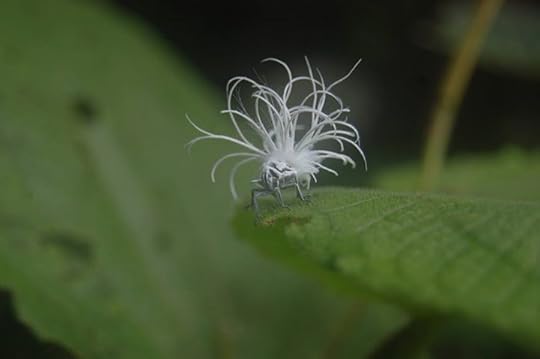
How can something so fluffy be so deadly?! Some endemic insects in the park.
Gunung Mulu National Park is very inaccessible, and going there really needs some effort. I arrived in Mulu on a plane from Kota Kinabalu, passing through Miri Airport in Sarawak first. This proved to be the most convenient — and expensive!  –way to reach the site compared to the 12-hour boat ride through the Mesilau River, or the 3-day trek along the Borneo headhunting trail in the mountains.
–way to reach the site compared to the 12-hour boat ride through the Mesilau River, or the 3-day trek along the Borneo headhunting trail in the mountains.
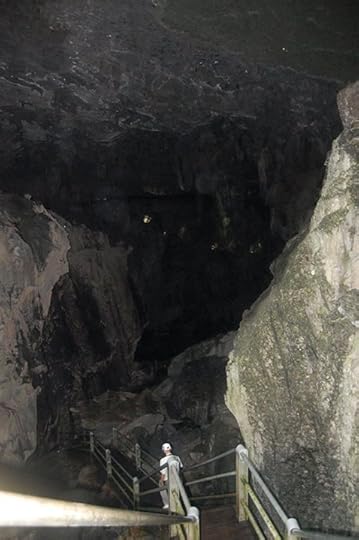
Entering Clearwater cave. The underground river is so strong that the sound its rapids make echoes loudly throughout the cave.
I managed to explore various walking trails within the park, visit the indigenous Penan nomadic settlements (Penan people have the exclusive hunting rights in the park in recognition to their tradition; some of them are even the descendants of the notorious Borneo headhunting tribes), experience the longest tree-based canopy walkway in the world, enjoy the Paku waterfall all to myself (trekking “alone” some 2km through the forest!), and climb the Tree Top Tower hoping to see some wild animals in action. However, the real highlights of my trip were, of course, its show caves.

A local Penan living in nomadic settlements around Gunung Mulu. He was about to go out hunting.
In my 5-day trip into the jungles of Sarawak, I stayed in the humble Mulu Homestay just outside the entrance to the park.
The first set of caves I visited are the Wind Cave and Clearwater Cave. These caves are in Mount Api, and to get there requires riding a longboat passing through the Melinau Gorge canyon, stopping by the Penan village, and finally trekking along the karst mountainside.

One of the cave shafts (around 60m high/deep?) in the Wind cave. So, again, we were way below the face of the earth.
Wind Cave is a personal favorite. The story behind its name is interesting – winds channeled to the cave, through its numerous shafts (eroded holes in the earth’s surface), can get really strong; hence, it is also named as the Cave of Winds. Its grand King’s Chamber, gifted with some of the best stalactites, stalagmites and pillar formations there are to find, will indefinitely hold a special place in my heart. As it was my first time to see cave shafts (I’ve seen four here), seeing one that drops close to 80 metres below the ground was a stunning experience. From where I had been, the ground that we know is already way above me – yes, I went that deep below the earth’s surface 
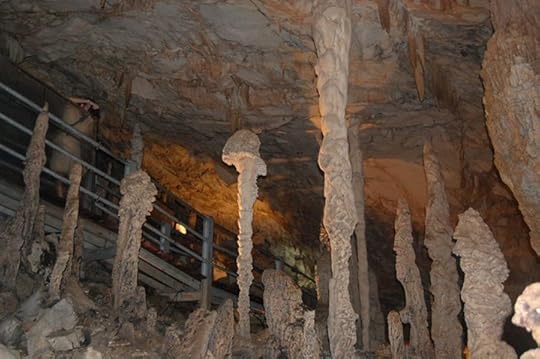
The beautiful King’s Chamber in the Wind Cave – the ultimate heartthrob for me!
The Clearwater Cave, on the other hand, boasts the record of being the largest cave network ever surveyed. Also, as much as I love Palawan’s Puerto Princesa Subterranean River NP, the real record of the longest underground river system actually belongs to the Clearwater Cave that spans over 170km in total length. The biggest cave chamber – the Sarawak Chamber – is also said to be connected to Clearwater. This massive cave network also displays a unique habitat for a rare one-leaf plant that only thrives at the cave’s mouth. At the end of the trek, I did not miss the opportunity to take a dip in the Clearwater river. I realized later on that I was the only one who braved jumping into the ridiculously cold river.
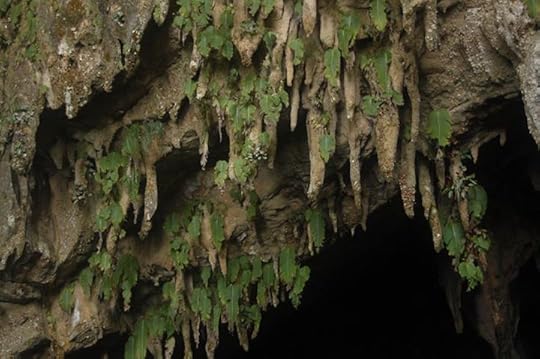
Rare one-leaf plants at the mouth of Clearwater cave.
The next set of caves I visited is that of the famed Deer Cave and adjacent Lang’s Cave, both of which are in the southern limestone karst hills of the park. To reach this part, visitors have to trek a total of 3kms from the park’s headquarter. Lang’s Cave is really small. It is so compact that one can even touch its ceiling, and get a close look at some ‘ongoing geological processes’ like dripstone activities, living stromatolites, and limestone (dis)colourations. Despite its size, this one is the most extravagantly furnished in terms of cave ornaments.

Dripstones in the Lang’s Cave. See the ceiling? Told you it was not that high.
The nearby Deer Cave has the reputation of having the biggest cave opening in the world at 170m x 120m. It’s not superbly decorated as the others, but the inside is home to a totally alien ecosystem that is practically deprived of sunlight and regular air movement. The cave houses around 3.5 million wrinkle-lipped bats, a lot of creepy crawlies, several cave snakes, some freshwater shrimps and fish (this was a big surprise!), and more than a metre-deep sea of guano (bat droppings). One of the highlights of the Deer Cave would be the Flight of the Black Dragon in the afternoon. In consonance to natural rhythms of the jungle, all the bats would fly out at dusk to feed on insects, forming what appears to be like a black ribbon dancing in the sky.
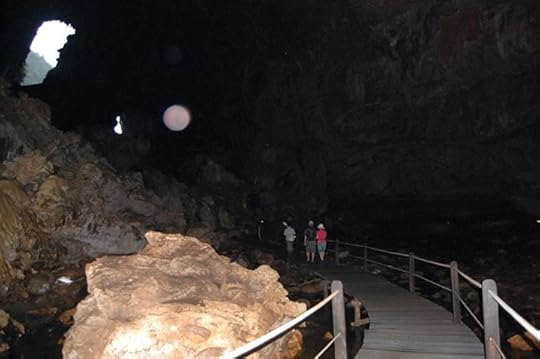
Deer Cave: the profile of Abe Lincoln in the opening, and the sea of guano.
During my entire stay in the park, I never got to see the bats leaving the Deer Cave despite patiently waiting for 3 hours every afternoon and always getting heavily soaked in the rain along the way. It was only then that I realized that it rains “all the time” in a rainforest!
All in all, it was a very pleasant trip into the forests of Sarawak in Borneo. Cave visits are only handled by certified heritage site guides, entry permits can be hard to obtain, all activities in the park should be recorded, information posters are everywhere, trails are signposted properly, and the site is well and strictly kept and administered (if you snap a leaf off a plant, expect some fine. So, better behave). These measures are all cognizant to the sensitiveness and vulnerability of this fragile natural wonder.
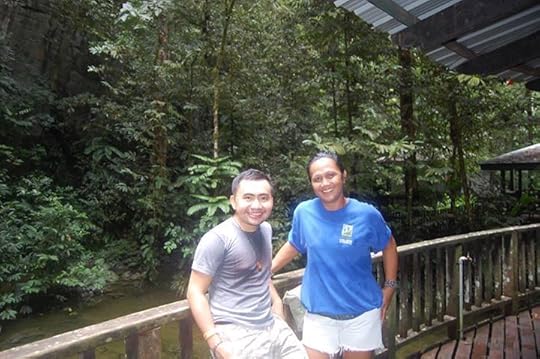
Maria Easters Sylvester, a guide from Kuching I made friends with, and I in the picnic area beside the Clearwater river.
After having visited five UNESCO World Natural Heritage Sites and several other natural parks in Asia, I have to admit that Gunung Mulu is one of the most well-managed and impressive natural sites I have seen.
The post Gunung Mulu National Park: a World of Caves appeared first on We Said Go Travel.
September 25, 2014
The World Outside Your Window,USA
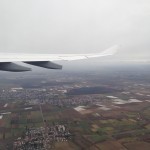
As I sit in my airplane seat, I look at the backpack full of workbooks in which I must address. “Alright, I should use these four hours wisely. I have enough time to finish at least one workbook. I can do this.” It seemed only a matter of seconds before realizing the plane was in full acceleration and taxiing down runway for takeoff. I had to put the book down momentarily and watch the ascension, as it was always my favorite part of flying. As we reach peak ground speed, I could see the other planes aligned for their turn to takeoff. They slowly recede into a multicolored blur. The exhilarating feeling of taking off is an act of physics and imagination that can’t be replicated anywhere. I was pressed against my seat as the nose of the airplane raised up. We were off the ground.
I had organized my space quite well. I had my backpack between my feet, and I was slightly leaning against the window, settling in for the long flight ahead. The slightly cramped feeling of an airplane seat was exactly what I needed. I had everything neatly organized and within arms reach. I had a table to work on, a window to look to the skies, and, of course, my in-flight beverage of choice, orange juice. Everything was in its right place and it was a comfortable, even secure, feeling. I turned my head and looked out the window. A highway full of cars came into view and then quickly faded until they looked like tiny ants crawling along the pavement. I couldn’t help but follow them until they were too small to notice. The orange and yellow hues of the sunrise flooded the cabin. Everyone in the cabin was in there peaceful state, including me. One is neither at point A, nor at point B, one is right in the middle of transition. One is afforded the rare opportunity to escape the chaos and take time to relax. Being contained in an airplane allows one’s imagination to be set free.
Being in a plane allows for a sense of freedom. You can relax and let go of all my worries for that period of time. Although we can not completely escape the chaos of the world, being in an airplane gives you the opportunity to forget about all of your worries and relax.
You become inspired also. The sky turns into a beautiful painting just waiting to be admired. You become accustomed to your constantly changing surroundings that pass by with every minute. The powerful yet calming hum of the engines slowly lulls you to sleep; and within a matter of hours, you arrive in a completely different world. The rush of rejuvenation comes over you as you imagine the endless possibilities you have at your disposal. That cramped yet secure airplane seat allowed your mind to set free and roam into the new depths of your mind.
Being thirty thousand feet in the air allows one to see the world from a different perspective. One peers down at the earth and everything seems different. Cars aren’t just cars anymore. They’re tiny ants. Lights aren’t just lights anymore. They are stars scattered upon the ground. You become lost in thought. You forget all your worries and become mesmerized by the world just beneath your feet.
Thank you for reading and commenting. Please enter the Gratitude Travel Writing competition and tell your story.
The post The World Outside Your Window,USA appeared first on We Said Go Travel.
We Said Go Travel
We Said Go Travel is a global community of over sixteen hundred writers with articles from every continent.
Stories are shared with photos and video from a perspective of the transformative power of travel. We Said Go Travel has hosted live and online events as well as travel writing contests around the world. ...more
- Lisa Niver's profile
- 57 followers








